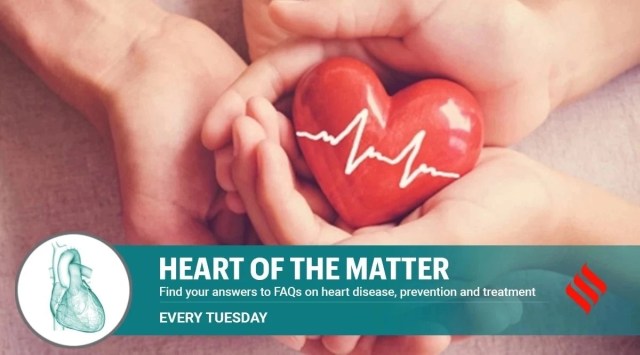Are you a daily exerciser or weekend warrior? New study says both equally good for heart health
The quantum --- 150 hours of moderate intensity exercise --- is more important than the pattern as it gets you out of your sedentary behaviour, say cardiologists
 According to the WHO, an adult should do about 150-300 minutes of moderate-intensity physical activity or 75-150 minutes of high-intensity physical activity in a week (Source: Getty Images/Thinkstock)
According to the WHO, an adult should do about 150-300 minutes of moderate-intensity physical activity or 75-150 minutes of high-intensity physical activity in a week (Source: Getty Images/Thinkstock) Have you had trouble devoting a 40-minute slot to your daily exercise as part of your heart health routine but found your work has overtaken your goals? No need to feel guilty about cheating on yourself as you can make up for your lost quota over the weekends. If a new study, published in the JAMA Network is to be believed, it is the amount of activity and not the timing of exercise that is important to prevent heart attacks, strokes and elevated levels of lipids and blood sugar.
 Quick takeaway on exercises (Designed by Abhishek Mitra)
Quick takeaway on exercises (Designed by Abhishek Mitra)
Scientists examined data of about 90,000 people, who wore accelerometers to measure their activity levels, and found similar reductions in the risk of heart attacks and strokes in the group that worked out one or two days a week (weekend warriors) and those who exercised over the course of the entire week. Shaan Khurshid, an electrophysiologist at Massachusetts General Hospital and an instructor at Harvard Medical School in Boston, and the lead author of the study said that the findings suggest “it is likely the total duration of moderate to vigorous activity, rather than the pattern, matters most for cardiovascular risk.”
ARE BOTH METHODS EQUALLY EFFECTIVE?
Dr Virendar Sarwal, Director, Department of Cardiovascular and Thoracic Surgery, Ivy Hospital, Mohali, says that while the concept of busy professionals exercising on the weekend is more beneficial than no activity at all for cardiovascular health, burning extra calories and building stamina for the heart work best when spread out over the week as a regular rhythm. “When you phase out your physical activity over seven days, the stress on your musculoskeletal system is evened out. In the weekend warrior approach, the stress on the musculoskeletal system becomes too high and one needs to be careful in avoiding any injuries or a sudden breakdown. When we go for the weekend warrior approach, we need to be extra careful not to become over-enthusiastic to achieve or overdo the target to avoid any harm to our body or heart. Personally, I would prefer a spread-out approach over the week as it brings your body into a rhythm for a good number of days rather than only two days. Along with exercise, diet regulation is equally important for cardiovascular health,” says he.
EXERCISE ANYTIME BUT NOT IMMEDIATELY AFTER MEALS
This study, adds Dr Sudheer Saxena, Head of Department, Cardiology, Max Hospital, Mohali validates what has been obvious to cardiologists for many years. “It is a myth that one should only go for a ‘morning’ walk. Any exercise is better than no exercise. Twenty minutes of brisk exercise (walking, running, cycling and swimming) five times a week are all one needs to keep the heart healthy. The duration of exercise rather than the ‘time’ of the exercise is more important – one can exercise in the morning, during a lunch break, in the evening before meals, or even two hours post dinner. The only thing to remember is not to exercise immediately after meals, which unfortunately most people do. Warming up for five minutes prior to brisk exercise is imperative,” he says.
Dr Saxena says it is best to avoid going out in extreme weather, when it’s too hot, humid, cold, windy and foggy, and develop a routine indoors.
Dr Karun Behal, Senior Consultant, Cardiology, Fortis Hospital, feels what really matters is the quantum of the workout rather than the pattern of workouts, 150 minutes at all costs, be it on weekdays or weekends. “The study findings are encouraging for work-stressed people who can use their weekend hours to work out and prevent cardiovascular ailments,” he adds.
KEEP MOVING TO ACHIEVE YOUR TARGET HEART RATE
Any activity, says Dr Jeet Ram Kashyap, Professor, Department of Cardiology, Government Medical College and Hospital, Chandigarh, is better than no activity, and moderate intensity exercise is best to keep the heart healthy. “Moderate intensity means increasing our heart rate to around 70 per cent of target heart rate, which is determined by age, that is 220 minus age is your Target Heart Rate. The exercise which one can do may be walking, jogging, swimming, cycling, gardening and so on. What matters most is regularity rather than timing as the effect is cumulative. One should start slowly and build endurance gradually,” he adds.
According to the WHO, an adult should do about 150-300 minutes of moderate-intensity physical activity or 75-150 minutes of high-intensity physical activity in a week. Prof (Dr) Rajesh Vijayvergiya, Department of Cardiology, Advanced Cardiac Center, Post Graduate Institute of Medical Education and Research (PGIMER), Chandigarh, says it is regular physical activity that helps in maintaining physical and mental health. “More than the time, type and duration of exercise, what is important is a regular schedule to achieve Cardiorespiratory Fitness (CRF), which includes the fitness of the heart, lungs, and muscles. A person with high CRF can perform strenuous physical activity because of the ability of the heart to pump more blood with each heartbeat and the capacity of the lung to mix more oxygen with blood. Physical activities help maintain a high CRF, which results in a drop in weight, cholesterol, blood sugar and blood pressure as well as improves cardiovascular health.”
“Smaller increments of physical activity slots can be tailored into the individual’s schedule so that the desired number of calories can be burnt to achieve optimum risk reduction,” says Dr Deepak Puri, Director, Cardiovascular Thoracic Surgery, Max Superspeciality, Mohali. “One has to calculate total calories consumed per day and total calories burnt in each activity per day. Then determine how much physical activity is required to burn out the excess calories consumed as well as stored within the individual’s body to keep cardiovascular disease at bay. The next step is to design a physical activity plan to reach the desired target and it has to be planned according to the frequency, intensity, time, and type that would suit the person best (FITT principle),” says Dr Puri.
Dr Parvinder Chawla, Senior Consultant, Internal Medicine, Fortis Hospital, Mohali, feels the bigger goal should be to make a constant effort not to be sedentary. “In addition to step counts, people can benefit from keeping a tab on the ‘total sitting time’ and avoid sitting for prolonged periods at a stretch as far as possible,” says he.





- 01
- 02
- 03
- 04
- 05


























